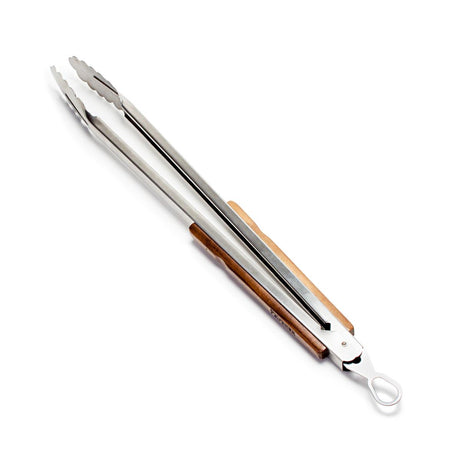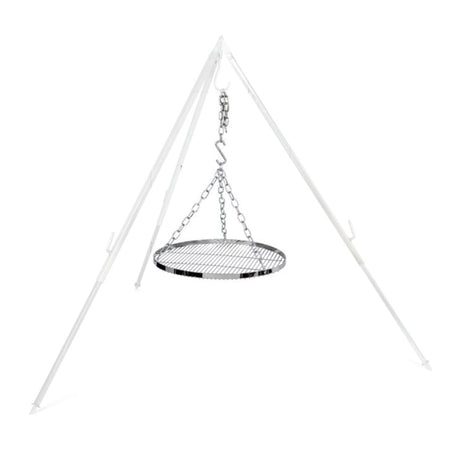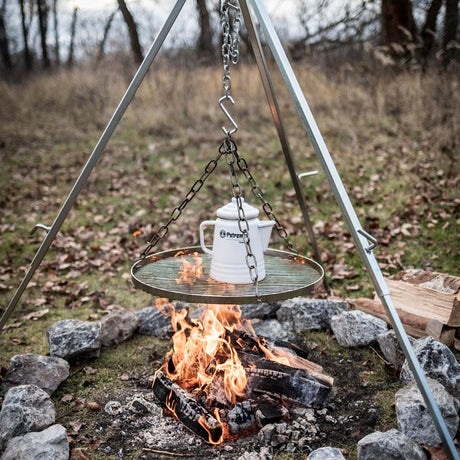Imagine being able to explore the most breathtaking scenery while doing something good for our planet and having lots of fun at the same time. Sounds too good to be true? Welcome to the world of sustainable hiking!
Table of contents
What does sustainable hiking actually mean?
7 strategies for sustainable hiking
The great motivation for change
The challenge of climate change
Conclusion
What does sustainable hiking actually mean?
Sustainable hiking is more than just walking on forest paths. It is a way of life in which every step is a commitment to environmental protection. It's about not just crossing nature, but respecting, protecting and understanding it. At a time when climate change is increasingly threatening our environment, responsible hiking is becoming an important building block for active environmental protection. Through conscious hiking, we can not only strengthen our own connection to nature, but also make an important contribution to the preservation of our natural environment.
The big challenge: hiking in the age of climate change
The figures speak for themselves: there are around 300,000 km of marked hiking trails in Germany, and at the same time studies show that over 80% of hikers travel by car. These statistics illustrate the enormous potential for more sustainable hiking experiences. Hiking tourism is booming like never before - especially since the coronavirus pandemic, more and more people are seeking relaxation in nature. This is putting increasing pressure on sensitive ecosystems and making sustainable hiking more important than ever. Experts warn of the consequences of the increased number of visitors: overloaded parking lots, erosion of hiking trails and disturbed wildlife are just some of the challenges.
7 strategies for sustainable hiking
Tip 1: Sustainable arrival - the first step counts!
Sustainability starts before you even take your first step on the trail. Your journey has a massive impact on your ecological footprint. Instead of traveling by car, there are numerous environmentally friendly alternatives. Public transport such as trains and buses are not only more environmentally friendly, but often also offer special hiking bus routes. The Deutschlandticket makes using them even more attractive and allows for flexible planning.
Carpooling is another great option. They reduce CO2 emissions, share costs and travel time and make the journey more sociable. For shorter distances, cycling is a fantastic alternative - zero emissions including a fitness bonus! Many regions have now developed excellent bike-hike combinations that allow you to cleverly combine different means of transportation. Apps and websites such as Komoot or Wanderbus.info help you plan sustainable journeys.
Sustainable travel options:
- Public transportation
- Carpooling
- Bicycle as an alternative
Tip 2: Buy your equipment smartly
When it comes to hiking equipment, you should focus on sustainability. Invest in high-quality, durable products that will last for years. Repairing is better than replacing! Brands such as Patagonia, Vaude and Maloja rely on innovative, environmentally friendly materials and production methods. Look out for certifications such as bluesign® or Fair Wear Foundation, which stand for sustainable production and fair working conditions.
Second-hand is not an emergency solution, but a conscious decision for environmental protection. Use swap meets, online platforms and repair workshops to make your equipment sustainable. Many outdoor stores now also offer rental and repair services. Renting is a sensible alternative to buying, especially for rarely used special equipment. Find out about the materials of your equipment and give preference to natural or recycled materials. Packaging also plays a role - avoid plastic packaging where possible and choose products with minimal packaging.
Buying strategies:
- Quality over quantity
- Discover sustainable brands
- Second-hand and upcycling
Tip 3: Avoiding waste - zero waste on your hike
Your rucksack becomes your environmental protection headquarters. Pack consciously: reusable lunch boxes, stainless steel drinking bottles and homemade snacks without packaging are the key. Take more garbage with you than you brought - become a hiking garbage hero! Plan your food in advance and avoid disposable packaging. Use cloth bags for any garbage you find along the way.
It is particularly important to dispose of biodegradable waste correctly. Banana peels and apple cores do not belong in nature either - they can disrupt the ecological balance and often take a very long time to decompose in our latitudes. Also consider alternatives to frequently used disposable products such as handkerchiefs or wet wipes. Washable variants are not only more environmentally friendly, but also more cost-effective in the long term.
Tip 4: Respect fauna and flora
You are a guest in nature. Stay on marked paths, keep quiet and keep your distance from wild animals. Do not feed any animals and do not disturb any nests or burrows. Your behavior can protect or endanger the sensitive habitat of animals and plants. Many wild animals are particularly active at dusk and in the early hours of the morning - be aware of this and plan your hikes accordingly.
Find out about local protected areas and their special regulations before your hike. Some areas are closed during the breeding season for certain bird species, while other regions have special rules of conduct. The use of headlamps and bright flashlights should also be limited to the bare minimum, as artificial light can disturb nocturnal animals. If you have a dog with you, keep it on a lead - especially in areas with wild animals or during the breeding season.
- Do not leave paths
- Be quiet
- Keep your distance from animals
- Do not pick plants
- Do not feed animals
Tip 5: Do not change nature
Leave nature untouched. Don't pick plants, collect stones or break branches. Avoid building cairns or altering the environment. Remember: you are a visitor in a complex ecosystem. What looks like a harmless intervention to you can have far-reaching consequences. Even the removal of individual plants can disturb the delicate balance.
Collecting rare plants or taking stones from protected areas is particularly problematic. Many plant species are protected and stones provide important microhabitats for small creatures. The popular practice of building cairns is also problematic: it destroys the habitats of insects and other small animals and can contribute to erosion. Instead, you can photograph or draw nature - that way you can stay creative without interfering.
- Do not pick plants
- Do not collect stones
- Do not break branches
- Do not build cairns
- Remain respectful
Tip 6: Avoid overtourism
Discover unknown hiking routes off the beaten track. Local hiking guides can help you to explore lesser-known but no less attractive regions. In this way, you support gentle, sustainable visitor management. Spread your hikes over different seasons - many regions are also beautiful and less crowded outside the main season.
Use apps and hiking guides to estimate the flow of visitors. Plan your tours for times when it is less busy - such as early in the morning or during the week. Also explore the immediate surroundings of your home - there are often exciting hiking opportunities right on your doorstep that don't require a long journey. Support local initiatives and small accommodation providers instead of large hotel chains. In this way, you support the regional economy and contribute to sustainable development.
- Explore lesser-known routes
- Hike off the beaten track
- Consult local hiking guides
- Discover smaller regions
- Support visitor management
Tip 7: Knowledge update: education is key
The more you understand about nature and ecosystems, the more mindful you hike. Attend guided tours with nature experts, read specialist books, listen to podcasts and immerse yourself in local conservation groups. Knowledge is the first step to responsible action. Many nature parks and environmental organizations offer special courses and workshops where you can learn more about local ecosystems.
Share your knowledge with other hikers - but respectfully and without lecturing. Get involved in local nature conservation groups or support trail maintenance projects. Many hiking clubs regularly look for volunteers for maintenance work or nature conservation projects. This way, you can actively contribute to the preservation of your favorite hiking trails.
- Guided tours with nature experts
- Local nature conservation groups
- Podcasts and documentaries
- Specialist books on ecology
- Attend workshops
- Get to know environmental groups
The Great Change Motivation
Why every single step counts
Sustainable hiking is more than a trend - it's a movement. Every conscious step protects ecosystems, supports regional economies, raises awareness of environmental issues and inspires others. The movement is growing steadily and more and more people are discovering that sustainable hiking does not mean doing without, but actually enriches the hiking experience. Through conscious hiking, you develop a deeper understanding of nature and its interrelationships.
Why every single step counts:
- Protects ecosystems
- Supports the regional economy
- Raises awareness of environmental issues
- Inspires others
The challenges of climate change
The effects are already visible: clear-cut areas in the forest, bark beetle infestation, damaged bridges and heavily used hiking trails. The German Hiking Association is working hard to make hiking trails future-proof and resilient. Extreme weather events such as heavy rain or storms leave their mark and require new concepts for trail construction and maintenance. Vegetation is also changing: dry periods are affecting forests and some plant species are migrating to higher altitudes.
The effects of climate change are already visible on many hiking trails:
- Clear areas in the forest after storm damage
- Bark beetle infestation
- Damaged bridges after periods of heavy rainfall
- Heavily used hiking trails
Conclusion: You can change the world
Sustainable hiking is not complicated - it starts with small, conscious decisions. You are part of a global movement that makes our planet a little bit better. Every single step counts, and together we can make a significant difference. Sustainable hiking combines the best of both worlds: The joy of exercise in nature with active environmental protection.
Hike smart. Hike sustainably. Hike with heart. 🌍🥾
Together we turn every hiking trail into a path of hope!
Hiking and protecting nature - the two go hand in hand! Discover our other articles and find out how you can enjoy your hikes even more consciously!
Animals in the German forest: these wild animals live in our forests
13 survival myths in check - what is really important for survival in the wilderness
Helping animals in winter: Here's how!










































